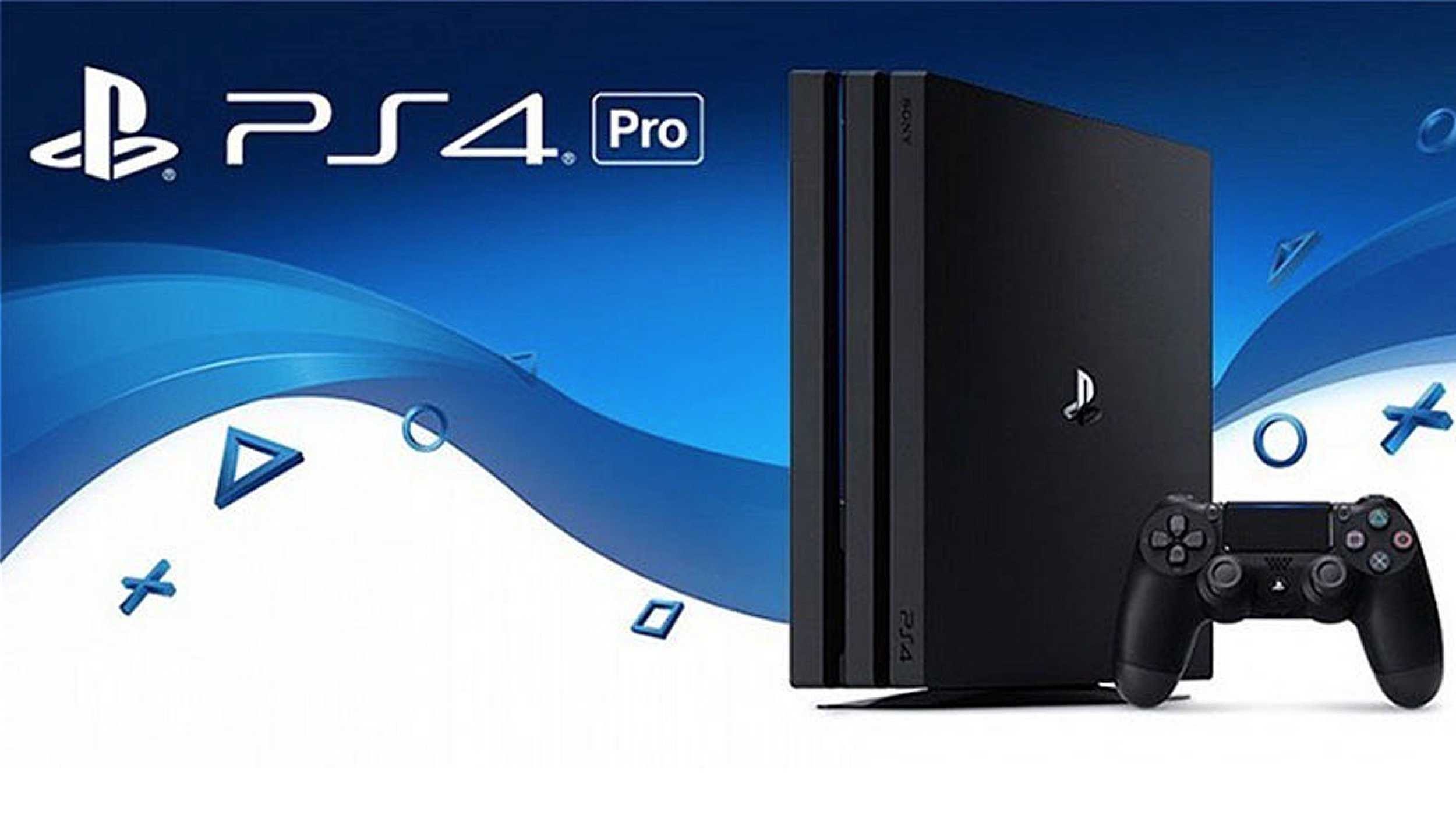Sony’s PlayStation 4 Pro is now available in South Africa. Unlike in previous console generations, this new console is simply an ‘update’ of the popular PlayStation 4. As such, it is more of a mid-cycle upgrade than a brand new system. Nevertheless, the questions remains: is it worth it? Maybe, depending on your budget.
The console, codenamed Neo, was briefly touched upon at the PlayStation press briefing during E3 2016 before being shown off at the PlayStation Meeting 2016.
The PlayStation 4 Pro essentially upgrades the three year old PlayStation 4 with newer hardware. the upgrades include a faster processor, better graphics, and support for media with a native 4K resolution. It will be sold along with the ‘base’ PlayStation 4, instead of replacing it. According to Mark Cerny, the chief architect for the PlayStation 4, the newer “PS4 Pro is not intended to blur the line between console generations”. Rather, the console is part of a vision “to take the PS4 experience to extraordinary new levels”. As such, all old and new games will be compatible with all models of PlayStation 4.
The PlayStation 4 Pro launched globally in November 2016 for $399 USD and launched on the 6th December 2016 in South Africa for R6999.
Hardware & Design: the same, yet different.
In terms of hardware design, the PlayStation 4 Pro is unmistakably a PlayStation console. For all intent and purpose, it looks exactly like the original PlayStation 4 console. It shares the same trapezoid design as the original console, but now with an extra layer on the top to make space for the newer hardware. It also forgoes the vertical capacitive buttons on the original system in favour of horizontal physical buttons, which have also been spaced further apart to prevent accidentally turning off the system when you simply want to eject a disc. The change is a welcome one.
The status light has also been revised. Instead of running vertically on the front and top of the console, the new status light runs horizontally, just below the Blu-Ray drive. Unfortunately, I found this change to be rather unwelcome. Since the PlayStation 4 Pro sits directly under the television in my household, the new position of the status light makes it glaringly obvious that it is there. The status light becomes especially annoying when watching media or playing games with the lights dimmed. The light is always there, even whilst off, taunting you to play… or pull the power cord.
When compared to the PlayStation 4, the Pro version of the console now packs 4.2 teraflops of total processing power. This is slightly more than double the 1.84 teraflops from the original ‘base’ PlayStation 4 system. Most of the additional processing grunt comes from a vastly upgraded graphics processing unit (GPU), with the older GPU being replaced by AMD’s newer Polaris architecture. Despite a speed boost from 1.8Ghz to 2.1Ghz, the central processing unit (CPU) and 8 GB of GDDR4 memory remain the same on the new system, and they also serve as the PS4 Pro’s biggest hardware bottleneck (discussed later). There is also 1 GB of DDR3 RAM to help with multitasking. The Pro console comes standard with a 1 TB HDD over the 500 GB in the base system, another welcome change. However, external hard drive support would have been better.
In terms of input and output options, the PlayStation 4 Pro has two USB 3.0 ports on the front of the console for easy access to media or charging controllers. The rear of the console has a new power input (first time it has changed since the original PlayStation), an HDMI out, input for the PlayStation Camera, an optical Toslink output, one more USB 3.0 port, and an ethernet port. The new system also includes support for Wireless ac and the 5 GHz spectrums – great additions for gamers with fast home WiFi networks.
Just like the original PlayStation 4, the PlayStation 4 Pro includes a standard Blu-Ray drive. At first glance, this similarity appears fairly standard. However, for a console that Sony touts as offering “dynamic 4K gaming and entertainment”, the lack of a Ultra High Definition (UHD) Blu-Ray drive is a rather strange omission. Especially since Microsoft’s updated Xbox One S includes support for UHD Blu-Ray discs. As such, and in my opinion, this actually counts as a negative for this new system.
The PlayStation 4 Pro also includes a slightly newer Dual Shock 4 controller. The controller is exactly the same as the original version with one exception: the lightbar. There is now a slight translucent strip in the touchpad that allows you to see what colour has been assigned to that controller. It is a small convenience, saving you from twisting the controller upwards. Much like the changed status light on the actual console, however, this new change may irritate gamers who enjoy playing games with the ‘lights’ off.
In terms of the operating system on the PlayStation 4 Pro, it is a carbon copy of the software on the base PlayStation 4. There is no difference, save for new resolution options that support 4K.
TL:DR: Same trapezoid shape as the original PlayStation 4, now with modified power and eject buttons and new status light (which may be bothersome to gamers). New GPU and faster CPU. Same 8 GB GDDR5, but extra 1 GB of DDR3 for multitasking. Standard Blu-Ray drive (no UHD support). Same port structure as original PlayStation 4 (2 x USB 3.0 in front, 1 USB 3.0 on back, 1 x HDMI out, 1 x optical audio out, 1 x aux input for PS Camera, 1 x power input). Also supports WiFi ac and 5 GHz. Dualshock 4 is essentially the same, but now with a small cutout to see/be annoyed by the lightstrip more easily. Exact same operating system as base PlayStation 4.
![PlayStation 4 Pro: Impressively Unimpressive [Review] 3 vamers-fyi-gaming-sony-reveals-399-playstation-4-pro-with-4k-hdr-gaming-but-is-it-worth-it-banner-03](https://vamers.com/wp-content/uploads/2016/09/Vamers-FYI-Gaming-Sony-reveals-399-PlayStation-4-Pro-with-4K-HDR-Gaming-but-is-it-worth-it-Banner-03.jpg)
Dreaming of that 4K Life
The PlayStation 4 Pro is marketed as a 4K console. Sony’s marketing materials clearly indicate that the new console can output all high definition resolutions from 720p through to 2160p (4K). Sony have said, on multiple occasions, that this console was made for gamers who want a 4K experience. So does it deliver on these promises?
In terms of gaming, and at the time of this review, there are just over 40 games that currently support the new updated specifications of the PlayStation 4 Pro. Sony has indicated that all games that ship after October 2016 should include some kind of support for the new Pro system. Games without Pro support will still work, but they will not feature any kind of improvements. In fact, the PlayStation 4 Pro effectively down-clocks its CPU and switches off half of its GPU when running PlayStation 4 games that do not feature a Pro mode. It is an interesting take on “backwards compatibility”, and one that has some issues. Base PlayStation 4 games aside, what about games that do have the added Pro mode? The results are certainly mixed, and very much “hit or miss” at this point.
According to Peter Wyse, the Senior Vice President of production and development at Warner Bros. Interactive, developers for PlayStation 4 Pro may use one of two optimised rendering options. The first is “Resolution mode”, which lets developers lock games to a specific resolution that is beyond 1080p. Then there is “Quality mode”, which dynamically scales the resolution depending on how the game is performing. Given these two performance options, Wyse says gamers can expect resolutions that are “up to” 90 percent of 4K resolutions. Wyes’s comments make it quite clear that the PlayStation 4 Pro will, more than likely, end up upscaling a majority of its content, rather than rendering natively at 4K resolutions. That is not to say that there will not be titles that are rendered natively at 4K, but rather that they will be the exception instead of the perceived norm. As such, most games that have support for PlayStation 4 Pro will often have additional display settings available in their respective menus. For the most part, the new options are split into two categories.
The first is all about refresh rate. Certain games will have options for 30fps and a 60fps. At 30fps, the game will include visual upgrades over the ‘base’ PlayStation 4 version of the game, and at a resolution that varies between 1080p (Full HD) and 2160p (4K). In the 60fps mode, the game is effectively identical to the base PlayStation 4 release save for, in rare circumstances, a small bump in resolution. Simply put, the 30fps mode attempts to increase visual fidelity at the expense of smooth frame rates, whereas the 60fps mode does its best to run games at higher frame rates, for a smoother experience, but with lesser graphical enhancements.
The second display category is all about 4K. Games in this mode will either run natively at 4K (2160p) or at a resolution above 1080p, which is then upscaled to 4K or near 4K using a checkerboard rendering method. At this moment in time, this mode is often without any visual upgrades over the base game (save for maybe slightly better draw distances) and is, instead, focussed on the resolution. For the most part, the 4K mode results in crisp visuals that enhance the overall enjoyment of the game.
![PlayStation 4 Pro: Impressively Unimpressive [Review] 4 vamers-fyi-gaming-sony-reveals-399-playstation-4-pro-with-4k-hdr-gaming-but-is-it-worth-it-banner-01](https://vamers.com/wp-content/uploads/2016/09/Vamers-FYI-Gaming-Sony-reveals-399-PlayStation-4-Pro-with-4K-HDR-Gaming-but-is-it-worth-it-Banner-01.png)
At the time of writing, the 4K and 30fps modes are often plagued by choppy or unstable frame rates in several titles, most of which fall below the 30 frames per second minimum threshold. This is no doubt an issue that will hopefully be patched out as developers begin to get to grips with the newer hardware. However, right now, the system is not the 4K gaming experience that many were hoping for. That is not to say that it is a bad or poor experience, rather it does not yet live up to the hype – nor should it given the price point (cheaper than a single Nvidia GTX 1080, which struggles to keep most games above 30fps, at high settings, in 4K).
In terms of 4K media and entertainment, the PlayStation 4 Pro offers a good experience… if you have a fast enough Internet connection. As previously mentioned, the PlayStation 4 Pro does not have a UHD Blu-Ray drive. Therefore, the only way to watch true 4K media is either via a connected external device or by means of streaming through YouTube and Netflix. In terms of streaming, YouTube recommends a minimum of 15Mbps for 4K video, whereas Netflix recommends 25Mbps for 4K and HDR content. Given these high bandwidth figures, most people will be well out of range of streaming any 4K content via the PlayStation 4 Pro. As such, the 4K media capabilities of the PlayStation 4 Pro are hindered by Internet speeds and aging Blu-Ray hardware.
TL:DR: Good for games higher than 1080p, but not quite 4K, and streaming 4K media, if you have the Internet bandwidth and speed. PlayStation 4 Pro down-clocks CPU and GPU for non-Pro enabled games – resulting in some strange performance issues. Console features new Pro mode settings in Pro enabled games: 30fps mode with higher visuals and resolution (ranging between 1440p and 2160p), 60fps mode with ‘base’ PS4 visuals at 1080p (or slightly higher). Most Pro enabled games currently have frames per second issues, resulting in inconsistent performance. PlayStation 4 Pro is good for 4K media if you have an Internet connection of at least 20Mbps or external device with 4K content, since there is no UHD Blu-Ray drive.
Made for Virtual Reality
As much as Sony keeps pushing the PlayStation 4 Pro as a 4K gaming and media device, the truth is that this console was designed to be the start of a bridge that allows Virtual Reality (VR) to go mainstream. The longer I use the PlayStation VR (PSVR) with the PlayStation 4 Pro, the more I am convinced that this console was Sony’s answer to providing an affordable and easily accessible VR experience for casual consumers.
Although the PlayStation 4 Pro might not yet live up to its 4K expectations, where it does excel is with VR. The differences present when using PSVR on the PlayStation 4 versus the PlayStation 4 Pro are like night and day! Games load faster, look better and perform more consistently overall on the PlayStation 4 Pro than on the older model.
The biggest benefit with the Pro is the bump in perceived resolution of the games via the PSVR. One such example is with Arkham: VR. On the base PlayStation 4 system, the game has a much lower resolution that affects the overall presentation. On the PlayStation 4 Pro, however, you begin to see and experience breathtaking detail that simply was not present on the base system. Even the frames per second ‘feel’ faster on the Pro over the base PlayStation 4. The difference is highly perceptible. Almost like moving from the PlayStation 2 to the PlayStation 3. This trend occurred in almost all of the PSVR titles that were tested including, but not limited to, PSVR Worlds, Robinson: The Journey, and Job Simulator.
TLDR: PS4 Pro was made for PSVR more than it was made for 4K gaming and entertainment.
![PlayStation 4 Pro: Impressively Unimpressive [Review] 5 vamers-fyi-events-vamers-voice-rage-2016-i-popped-my-geek-cherry-at-rage-playstation-vr-batman-main-image-01](https://vamers.com/wp-content/uploads/2016/10/vamers-fyi-events-vamers-voice-rage-2016-i-popped-my-geek-cherry-at-rage-playstation-vr-batman-main-image-01.jpg)
Who is the PlayStation 4 Pro for?
The PlayStation 4 Pro is a bit of an odd beast. On one hand it is currently the most powerful games console on the market, on the other hand it is only a fractionally better update over the base PlayStation 4. For the most part, it really is just a mid-cycle update in order to keep up with certain innovations, like VR. No more, no less.
In terms of the specification of the PlayStation 4 Pro, the choice to use the same CPU and memory architecture is an odd one. This choice has already been shown by Eurogamer to serve as a bottleneck to the more powerful GPU. The truth of the matter is that Sony may very well have missed the mark with the PlayStation 4 Pro. The system is effectively less than two and a half times more powerful than the base system (1.8 teraflops x 2.3 = 4.2 Teraflops). Multiple sources have also confirmed that the system is not able to offer “true” 4K gaming. This is most likely why Sony have been very careful with the system’s wording during recent PlayStation events. Instead of outright stating that the PlayStation 4 Pro will be able to play games in native 4K, Sony merely says that the system is ‘4K capable’. Native 4K games will exist, but more as exceptions than the rule.
The issue of 4K gaming aside, the PlayStation 4 Pro’s most glaring omission is the lack of a 4K UHD Blu-Ray disc drive. Given that the system was widely known as the ‘PS4K’ before its official announcement, and Sony’s advertising since then, the lack of a UHD Blu-Ray disc drive is perplexing. Furthermore, for a system that emphasises 4K gaming and media, this lack of foresight is glaringly obvious. Even Microsoft’s Xbox One S was updated to include a Blu-Ray Ultra HD disc drive.
Since the PlayStation 4 Pro’s only standout features are that it is marginally more powerful than the base system, and is now bundled with a 1 TB HDD, the question remains: is it worth purchasing?
![PlayStation 4 Pro: Impressively Unimpressive [Review] 6 vamers-fyi-hardware-review-gaming-playstation-4-pro-impressively-unimpressive-review-inline-03](https://vamers.com/wp-content/uploads/2016/12/Vamers-FYI-Hardware-Review-Gaming-PlayStation-4-Pro-Impressively-Unimpressive-Review-Inline-03.jpg)
For gamers who have yet to enter the current PlayStation console lifecycle, the Pro console is definitely a great option. In fact, it should be the only model of the PlayStation 4 that you should consider, especially if longevity is a concern and you already have a 4K television. However, if you do not yet have a 4K television, or a fast Internet connection, you may as well stick with the base PlayStation 4. The truth is that the Pro does not offer any real world benefits for users who have yet to embrace 4K – even then, the benefits are hit or miss at the moment.
4K aside, if you are interested in virtual reality, particularly PlayStation VR, and you do not yet have a PlayStation 4; the Pro is absolutely the best console to purchase right now. This system is Sony’s answer to offering a better PlayStation VR experience as developers can use the extra processing grunt to increase the frame rate and crispness of scenes, among other benefits, over the base Playstation 4. However, if you do already have a base PlayStation 4, I would highly recommend simply purchasing a PSVR (R6499) over upgrading to the PlayStation 4 Pro (R6999). Even on the base PlayStation 4, the PSVR experience is still a great one. Although PSVR games may not look as sharp or load as quickly as on the Pro, the fact remains that spending R6499 on a new way to play (PSVR) is a far better proposition, in my opinion, than upgrading to a marginally faster system that really does not offer anything new other than higher resolutions (I am still perplexed by the omission of a UHD Blu-Ray drive).
Truth be told, anyone who upgrades from the base PlayStation 4 to the PlayStation 4 Pro is doing so purely in order to have “the best”; and there is nothing wrong with that. Especially if you can afford it. For everyone else, your money would be better spent on something new and exciting like the PlayStation VR; at least for now. Perhaps in a few months time, when more games have tangible upgrades in performance and visual quality on the Pro versus the base system, then the newer console might be worth the upgrade. Until then, enjoy your PlayStation 4 and rather save for the impending arrival of Microsoft’s Xbox Scorpio.
TL;DR: PS4 Pro’s old CPU + Memory creates a bottleneck for the GPU resulting in variable performance. Native 4K games a rarity, exception rather than norm. No UHD Blu-Ray is problematic for 4K media and entertainment, unless you have a fast Internet connection. PS4 Pro and PSVR were made to be together. If new to PlayStation, the Pro is the console to get. If you already have a PS4, rather spend the money on PSVR. Alternatively, save for Xbox Scorpio – which is only a year away. However, if you have the money and you want the best PlayStation that money can buy, get a PS4 Pro.
Owner, founder and editor-in-chief at Vamers, Hans has a vested interest in geek culture and the interactive entertainment industry. With a Masters degree in Communications and Ludology, he is well read and versed in matters relating to video games and communication media, among many other topics of interest.


![PlayStation 4 Pro: Impressively Unimpressive [Review] 1 Sony's PlayStation 4 Pro is finally available in South Africa, and many countries around the world. Now the question remains: is it worth the upgrade?](https://vamers.com/wp-content/uploads/2016/12/Vamers-FYI-Hardware-Review-Gaming-PlayStation-4-Pro-Impressively-Unimpressive-Review-Inline-01.jpg)
![PlayStation 4 Pro: Impressively Unimpressive [Review] 2 Sony's PlayStation 4 Pro is finally available in South Africa, and many countries around the world. Now the question remains: is it worth the upgrade?](https://vamers.com/wp-content/uploads/2016/12/Vamers-FYI-Hardware-Review-Gaming-PlayStation-4-Pro-Impressively-Unimpressive-Review-Inline-02.jpg)

![PlayStation 4 Pro: Impressively Unimpressive [Review] 7 Sony's PlayStation 4 Pro is finally available in South Africa, and many countries around the world. Now the question remains: is it worth the upgrade?](https://vamers.com/wp-content/uploads/2022/01/Vamers-Authors-Profile-Image-Hans-Haupt-2022-02-150x150.png)








![Razer Kraken V3 Pro Review – Welcome to Boomtown [Redux]](https://vamers.com/wp-content/uploads/2022/07/Vamers-Technology-Razer-Kraken-V3-Pro-Review-Banner-218x150.jpg)










